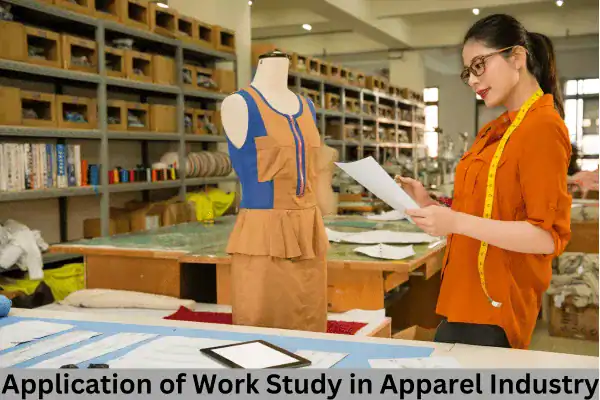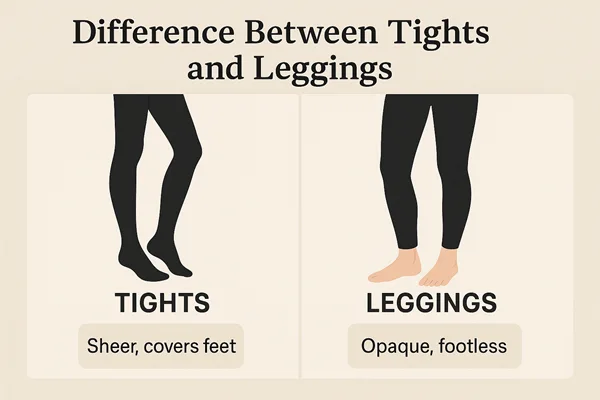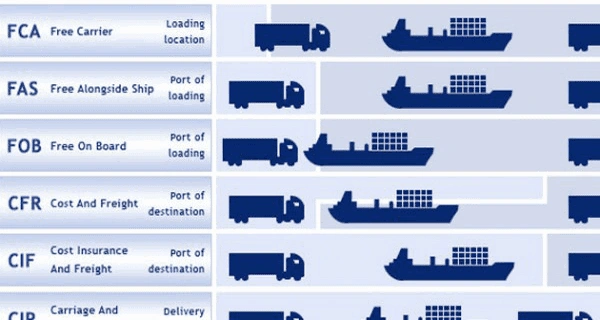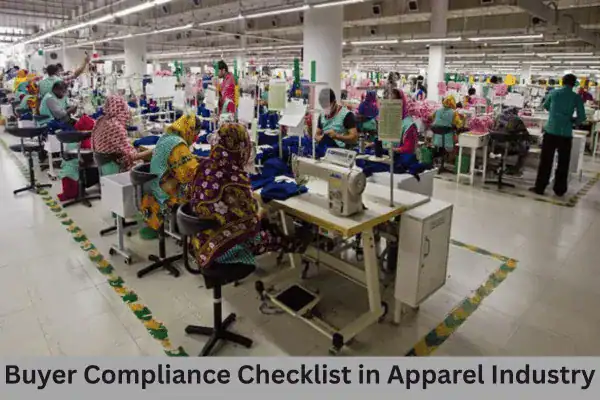Application of Work Study in Apparel Industry
Work study is an analytical study under industrial engineering that plays a vital role in reducing garment manufacturing costs and increasing productivity with minimum resources. Work Study or Work Study System is a systematized study of the chaining of manufacturing methods to improve efficiencies and productivity in operations. Method study and time study are two branches of work-study. This article is about the Application of Work Study in the Apparel Industry, which will help you.

What is Work Study?
Work study is a higher technological science that works for systematic examination of methods of carrying out activities, such as to improve the effective use of resources & to set up standards of performance for carrying out activities. Work-study in the apparel industry is the investigation of the work done in an organization utilizing a consistent system, to attain the best possible use of men, machines, and materials at presently available conditions.
Garment factories paid a large amount to this department, as this department works to increase productivity. It is the analysis of the operations required to produce a style. It is also important to consider ergonomics decisions, job design, and workstation development. An effective work-study requires both work measurement and method analysis.
Tools and Techniques used in the Garment Industry:
- Work study.
- Line layout.
- Line balancing.
- Capacity Study
- Material management/information System (MIS).
- Quality management system (QMS).
- Scheduling.
Tasks of work-study
- Operation Break-down
- Line layout
- Time study
- Line balancing
- Capacity Study
- SMV for target production
- Efficiency
- Daily production report
- Weekly, Monthly & Yearly production report
- Loss study
- Cause study
Influences of work-study:
By using work-study techniques in an industry can influence the following factors.
- Lower the costs
- Productivity ratios
- Manufacturing profitability
- Elimination of unnecessary work
- Set equitable workloads
- Determine performance standards
- Determine methods for checking achievement
Method Study:
A method study is an investigative technique used to determine the best way of doing a job. It determines the most effective means of executing each process. It also engaged in solving problems that concurred with methods.
Method study uses a basic pattern that is SREDDIM S=select the task to study
R=record the facts from observation E=examine critically, D=develop the best method
D=Define a new method that is most economical. I=Install, it as an standard practice, M=maintain by regular routine checks
Work-study flow chart:
Receive the order list
↓
Receive sample
↓
Do a process breakdown
↓
Provide SMV to marketing & planner
↓
Making a paper layout
↓
Average pp Meeting
↓
Follow up machine layout
↓
Do a time study & line graph
↓
Help rebalance the line & finalize the SMV online by time study
↓
Do efficiency & other reports
Application of Method Study:
- Designing work station to increase efficiency
- Develop layout
- Improve material flow
- Planning the best rate of movement of people
- Develop a system of various functions
Work measurement:
Work measurement is used to determine the required time to complete one operation & the amount of work that can be performed by one operator at a specific time. It provides a fair way of estimating the time to do a job by a skillful operator with plentiful work supply & proper equipment
Methods of Work Measurement:
- Time study
- Experience of personnel
- Predetermines Motion / Time System [PMTS]
- Standard data
- Operator reporting
- Work sampling
Time study:
Time study is the study of each step of an operational procedure and the time consumed by them for the purpose of increasing the efficiency of work.
The calculation process of time study:
- First, we have to record the names of the operation, the machine used worker’s information in the time study chart.
- Then, using the stopwatch, we have to take the required time to complete the 10 cycles as the Operation.
- Then we have to add a 30% allowance for this time.
- At last, using the SMV average time, we have to enclose the time study chart.
Calculation of Sewing Line Efficiency:
Line efficiency = (Total production *SMV*100) / (No of operator *Working hour *60) Formula of Operation
Capacity graph:
- Capacity/hr = (60/Capacity total avg. time)x total manpower.
- · Capacity achievable = capacity/hr x balance%
- Performance = (SMV/ capacity total time) x 100
- Balance = Basic pitch time/bottleneck time
- Improve% = 1- (production per hr/ capacity per hr)
- BPT = Capacity total avg time/ total use worker
- UCL = BPT x 120%
- · LCL = BPT x 80%
Work study Formula
- Target/hr = Total worker x (60/ SMV) x 73%
- Efficiency = (Earn hr/ available hr) x 100
- Earn hr = (Total production x SMV)/60
- Available hr = Total worker x total working hr
- Performance = Earn hr/ (available hr- total off hr) x 100
- Target achieve efficiency =(total prod – total target) x 100
- Variance = (total prod – total target) / total target x 100
- Basic time = (Observed time x rating)/ standard rating
- Standard minute value = Basic time + Allowance time
Job responsibilities of the Work Study Officer/ Department in the Garments Industry
- Time and Motion Study: – Perform time sampling to establish standard times for different operations like cutting, sewing, and finishing.
- Perform a motion study to remove unnecessary movements and improve basic work methods.
- Using tools like stopwatch time study, predetermined motion time systems (PMTS), and video analysis.
- Prepare and revise SOPs for different processes of production.
- Standardize methods of work across the floor factory.
- Identifying bottlenecks within production processes and a sense for improvements.
- Propose layout changes that reduce time in material handling.
- Put in place lean manufacturing and 5S techniques to improve efficiency.
- Balanced production lines, ensuring uninterrupted flow and minimizing idle time.
- Calculate machine and labor capacity to achieve the predetermined target of production.
- Assist in manpower planning depending on production demand.
- Analyze production costs relating to labor, material, and time.
- Provide techniques for keeping SAM (standard allowed minute) and improving efficiency.
- Implement cost reduction without compromising quality.
- Train the workers and supervisors on the improved working methods.
- Performance of operations managers should be monitored against standard performance norms.
- Ergonomic improvements are to be recommended to reduce worker fatigue and worker injuries.
- Ensure compliance with workplace safety standards.
- Time study with productivity reports and efficiency levels should be recorded.
- Generate regular reports concerning productivity metrics for the management.
- Follow the use of Industrial Engineering (IE) tools for data-driven decision-making.
Work-study job in the Garments industry:
Nowadays, most garment industries have a work-study department or assigned employees for work-study-related work study related works.
- Assistant manager- Work study
- Work study officer
- Senior officer- Work study
- Executive- Work study
- Work study Assistant
The work-study is an integral part of the Apparel Industry, which streamlines processes in terms of cost and efficient operations and helps boost production. The Application of work study is the beatification of Method Study, Time Study, and Motion Study could provide those manufacturers with increased productivity, optimum quality, and finally minimized cost.



